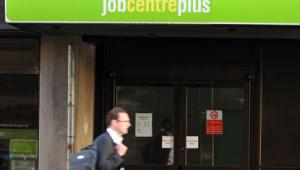By Vivienne Russell | 20 June 2012
Public sector employment in the UK fell by 39,000 in the first three months of 2012, the tenth consecutive quarterly drop, the Office for National Statistics revealed today.

The vast majority of these job losses (33,000) came from local government, the statistics showed. Employment in central government, including the NHS, dropped by 1,000 and in public corporations by 5,000.
Compared with the first quarter of 2011, local government employment dropped by 7.1%, public corporation employment by 6.9% and central government employment by 1.4%.
Approximately 6,000 workers have moved from local government to central government over the quarter as a result of local authority controlled schools converting to academy status. Over the year, 56,000 employees changed category as a result of the expansion of academies.
All English regions and Scotland recorded falling public sector employment, with the largest coming from Yorkshire and The Humber and the East of England. There were increases in public sector employment in Wales and Northern Ireland.
Meanwhile, private sector employment increased by 205,000 to 23.4 million, the ninth consecutive quarterly increase. Overall, the UK employment rate for people aged between 16 and 64 was 70.6%, up 0.3% on the quarter.
The unemployment rate fell by 0.2 percentage points to 8.2%. There were 2.61 million unemployed people, down 51,000 on the quarter. Unemployment was down in every UK region with the exception of the Northeast, Northwest and Northern Ireland.
Andrew Sissons, researcher at the Work Foundation, said it was ‘difficult to reconcile’ the rise in the employment rate with the ongoing problems in the economy.
He said: ‘There are three possible explanations for this baffling trend. First, the good news on jobs may be a temporary blip, and we may see unemployment rise sharply later in the year. Second, the GDP figures may be underestimating the performance of the economy, and may eventually be revised upwards. Third, and perhaps most worrying, it is possible that we are seeing a transition to a lower wage economy, in which jobs bounce back, but at a lower level of pay and productivity.
‘It is too early to tell which of these outcomes is correct. What is clear however, is that it is highly unlikely we will see a sustained labour market recovery without a return to growth or further significant hits to real wages and living standards.’
Commenting on the decline in public sector employment, Alan Downey, partner and head of public services at consultant KPMG, said it came as no surprise and was not a cause for concern.
‘There is no necessary relationship between the number of public servants and the quality of public services: so long as productivity improves, the public sector will be able to provide high quality services with a significantly smaller workforce,’ he said.
‘The big challenge for the government – and for the country as a whole – is to ensure that private sector employment increases at a pace that more than compensates for the decline in the public sector.’
But the public sector union Unison said ‘brutal public sector cuts’ meant 39,000 more families were now facing the ‘misery of unemployment’.






















